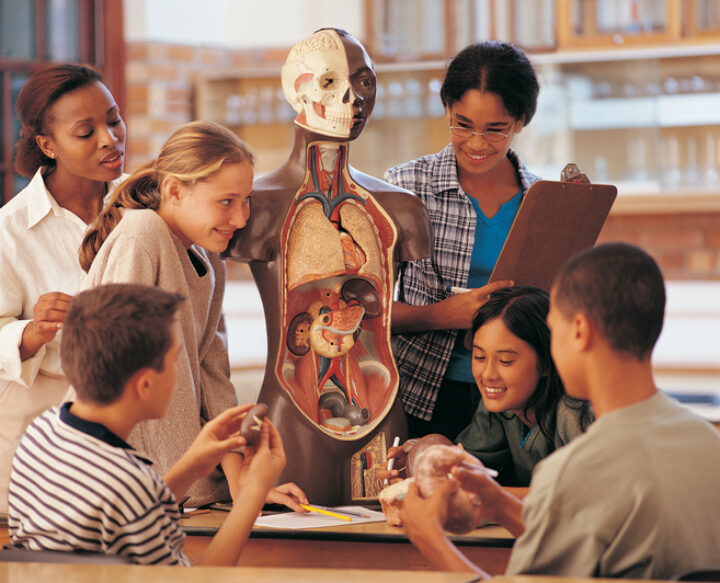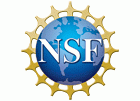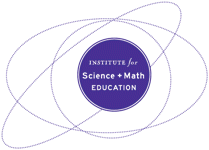How do we present gender, sex, and sexuality as part of inclusive and accurate science teaching?

- Science educators should leverage students’ curiosity about human experience to create an inclusive community that supports all kinds of learning and development.
- District staff & PD providers should explicitly communicate and provide training to help educators, students, and families understand these topics.
- Administrators should seek out more diverse representations of gender and sexuality across content areas in ways that reflect student and community interest.
What Is The Issue?
Social ideas of gender identity and sexuality overlap with many commonly taught biology topics, including genetics, reproduction, sexual selection, and anatomy and physiology. Most teachers will need to learn more about these topics to address them accurately and inclusively. Educators can help students build more complete views of both science and society by addressing the diversity and fluidity of sex, gender, and sexuality in both human and non-human species. These approaches help support a more full sense of belonging for gender-diverse students in science education and are an important learning focus for all members of society.
Authors:
BY SAM LONG, LEWIS STELLER, & RIVER X. SUH (GENDERINCLUSIVEBIOLOGY.COM) AND KATY BUTLER & KIERAN SLATTERY (GENDER INCLUSIVE CLASSROOMS) | JUNE 2021
REFLECTION QUESTIONS
- How did you come to understand gender and sex as a young person? How can you expand your thinking to provide an inclusive education for students?
- How comfortable or familiar are you with LGBTQ+ terminology? How can you establish foundational language in your classroom while also acknowledging continual changes in language that your students may use in their everyday lives?
Things To Consider
- All students have questions about gender and sex, regardless of their own age or identities. Humans naturally learn about gender starting in early childhood. By the teenage years, 9.5% of young people identify as LGBT, and many more know somebody who is 2SLGBTQ+.1
- Exposure to inclusive curriculum is correlated with positive outcomes for LGBTQ+ students including increased attendance (Fig. 2.9), more positive relationships with teachers, and increased peer acceptance (Fig. 2.12). LGBTQ+ students exposed to inclusive STEM curricula were more likely to choose a STEM major in college (p. 71).
Attending to Equity
- Teaching the complex truth about gender prepares all students to be responsible and informed community members. People who learn about both biological and environmental influences on gender show less prejudice against transgender people.
- Work with your students to identify what inclusive language works developmentally and culturally for your group. Make space for linguistic diversity and Indigenous and non-Eurocentric perspectives on gender, biology, and identity.
- Consider sharing background resources with families in other languages like Spanish (Family Toolkit and infographic), Burmese, Cantonese, Korean, Mandarin, and Vietnamese.
Recommended Actions You Can Take
- Educate yourself with foundational knowledge about the meaning of gender and sex in biology, the many factors involved in human sex determination, and the diverse patterns in animal species. Scientific discovery continues, so a science teacher must continue to learn about these topics in order to serve students well over time.
- Reflect on your own gender and sexual identities with the Gender Galaxy (Action Canada), the Gender Wheel (Maya Gonzalez) and Flower of Power (LGBTQ2s). How do your identities impact the way you learn science, see yourself reflected in science, and teach science?
- Integrate inclusive language and framing year-round into units that you already teach, not just during discrete lessons about gender. This signals to students that these topics matter and are important in biology. See detailed guidance on language use and framing.
- Design and adapt lessons using the Framework for Gender-Inclusive Biology Curriculum. Use our more detailed list of resources and advice for Elementary School and for Middle & High School.
- Learn what policies govern teaching about gender, sex, and sexuality in your region. Some states have “No Promo Homo” laws, sex education laws, and gender and sexuality in curriculum laws, which may limit how you teach science. A handful of states have adopted inclusive curricular standards, though they often focus on social studies content. Don’t do this work alone! Consider some model guidelines and reach out to potential partner groups. Explore these additional ideas and resources!
- Supplement visual classroom culture with inclusive posters like There’s More Than One Way To Make A Family, LGBTQIA Science/ STEM Etymology Series, STEM Role Models, and Rodillian Academy’s Science and Math Posters.
1. 2SLGBTQI+ stands for two-Spirit, lesbian, gay, bisexual, transgender, queer, questioning, intersex, and other gender or sexual minorities. The rest of this tool uses the more common LGBTQ+, with the understanding that the “+” in this acronym represents a huge variety of identities.
ALSO SEE STEM TEACHING TOOLS
STEM Teaching Tools content copyright 2014-22 UW Institute for Science + Math Education. All rights reserved.
This site is primarily funded by the National Science Foundation (NSF) through Award #1920249 (previously through Awards #1238253 and #1854059). Opinions expressed are not those of any funding agency.
Work is licensed under a Creative Commons Attribution-ShareAlike 4.0 Unported License. Others may adapt with attribution. Funded by the National Science Foundation (NSF). Opinions expressed are not those of any funding agency.


 Email Feedback
Email Feedback

